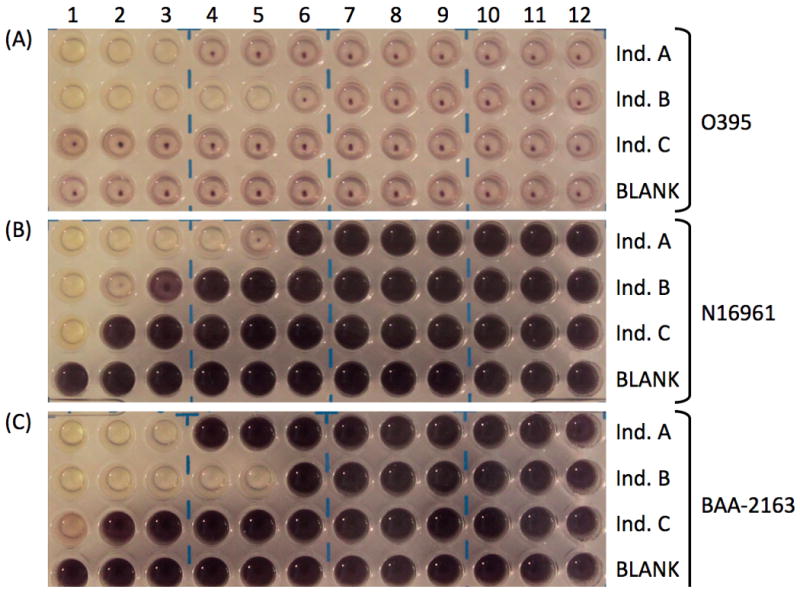Figure 1.

Sample plates of positive and negative vibriocidal assay results for three different Vibrio cholerae strains (A) O1 classical biotype wild-type strain O395, (B) O1 El Tor biotype wild-type strain N16961, and (C) O1 El Tor biotype strain BAA-2163 (representative strain from the 2010 Haitian cholera outbreak). For each strain, three serum samples were tested, individual A (top row – Ind. A), individual B (second row – Ind. B) and individual C (third row – Ind. C) along with one no serum negative control, BLANK (bottom row). Serial dilutions were performed from left to right (column 1 is undiluted; column 12 is 1:2048). Titers were determined as the reciprocal of the last clear well (due to cell lysis) for each row, resulting in no reduction of neotetrazolium chloride (NTC), which gives the characteristic purple coloration. For example, for (A) O1 classical biotype wild-type strain O395, the last clear well for individual A is in column 3 (dilution of 1:4) and so the titer would be 4. For individual B, the last clear well is in column 5 (dilution of 1:16), and so the titer is 16. Individual C does not have any clear wells, indicating that this serum sample does not contain any antibodies against V. cholerae. As expected the bottom row (BLANK) did not have any clear wells. Note that when testing serum samples against El Tor biotype strains, the color development is much more dramatic (B and C) than when testing against classical biotype strains (A). Classical O395 (A) showed slight purple color formation and settling of the reduced NTC, while both El Tor strains (B and C) produced a darker purple color, but still showed evidence of reduced NTC settling. This may reflect the hardiness of the strain being tested, as the longer the cells are alive and metabolizing, the more NTC will be reduced, resulting in stronger color development, as observed in the El Tor strains (B and C).
